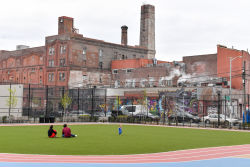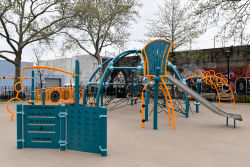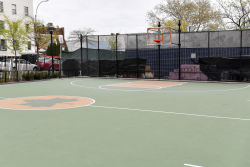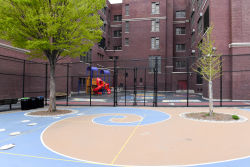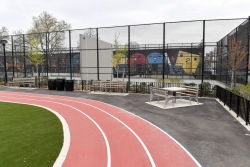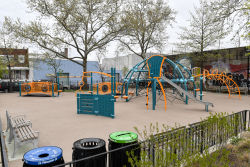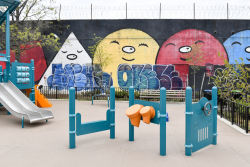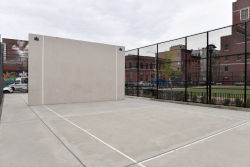Ten Eyck Playground
Ten Eyck Playground
This playground and the adjoining street are named for Coenradt Ten Eyck (1617-1686), a settler in the New Amsterdam colony. He was born in 1617 in Moers, Germany, to Wilhelm Ten Eyck (c.1590 – c.1645) and Michel Puitzen (1592- c.1623). He married Maria Boele (b. 1622), in Amsterdam in June 1645, and the marriage intention, dated May 12, 1645, indicates that he worked as a shoemaker’s helper. In approximately 1651, they immigrated to New Amsterdam.
Records indicate Ten Eyck remarried, and his second wife was named Antje (b. 1629). He worked as a tanner and shoemaker near his home on what is now Coenties Slip, a corruption of the Dutch nickname Coentje, meaning “Coenradt’s and Antje’s.” He died on April 5, 1686.
Williamsburg was once part of the Dutch town of Boswijck (or Bushwick). In 1802, Richard Woodhull, who wanted to create a residential suburb of Manhattan, began a ferry service from today’s Metropolitan Avenue in Brooklyn to Corlear’s Hook across the East River. In 1810, he purchased 13 acres of land surrounding the ferry and named the area Williamsburgh after Colonel Jonathan Williams (1750-1815), the original surveyor of the site. Woodhull went bankrupt one year later, but Williamsburgh remained. For much of the early 19th century, it was a rural farming community along the East River. In 1818, entrepreneur David Dunham (c. 1790) launched a steam ferry service to Manhattan from Williamsburgh, which increased development.
In 1828, the Village of Williamsburgh was incorporated. In the following decades, industry flocked to the waterfront, and Williamsburgh became so large that it was chartered as a city in 1852. Three years later, the City of Brooklyn annexed Williamsburg, dropping the final “h” from the name. Williamsburg soon became a fashionable suburb and members of the Ten Eyck family were among the prominent inhabitants, and in 1869 Williamsburg’s Wyckoff Street was renamed Ten Eyck Street. With the rest of Brooklyn, Williamsburg became part of New York City after the consolidation of the boroughs in 1898.
After the 1908 opening of the Williamsburg Bridge, the neighborhood’s population soared. The bridge allowed Eastern European immigrants, including Lithuanian, Polish, Italian, and Russian Orthodox newcomers, to leave the crowded Lower East Side of Manhattan for the greater expanse of Brooklyn.
The City of New York acquired this site, bounded by Meserole Street, Scholes Street, and Bushwick Avenue, through condemnation for school purposes in 1956. In 1959, NYC Parks and the Board of Education (now the Department of Education) created a jointly operated playground on the site. One portion of the property was allotted to the school, P.S. 196, known as the Ten Eyck School, and NYC Parks developed Ten Eyck Playground on the remaining land. The playground offers play equipment with safety surfacing and handball courts. The playground’s public restroom will be going through a reconstruction.
This site is part of Parks' Community Parks Initiative, a multi-faceted program to invest in under-resourced public parks and increase the accessibility and quality of parks throughout the five boroughs. In 2017, this project constructed new play equipment, including a spray shower, a synthetic turf field, a painted track, and a basketball court.
Check out your park's Vital Signs
Clean & Safe
Green & Resilient
Empowered & Engaged Users
Share your feedback or learn more about how this park is part of a
Vital Park System

